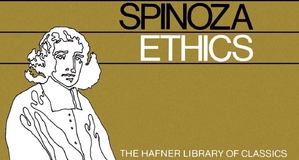Teresa of Avila's The Interior Castle as an Individualizing Text
By
2015, Vol. 7 No. 06 | pg. 1/2 | »
KEYWORDS:
Teresa of Avila has long been respected as one of the most significant theologians to emerge from Spanish Catholicism. Her determined leadership inspired the founding of many convents throughout her homeland and ignited a reform within the Carmelite order of nuns. Yet, Teresa’s influence extended beyond the sacred walls of her cloister. Despite historical misogynistic efforts to deny the importance of her spiritual treatises, her ardently thoughtful work is now acknowledged as being partially responsible for “moving contemplative medieval traditions into a new age” by adapting the philosophical language of Catholicism to the necessities of a progressively individualistic era (Ahlgren, 2005, p. 3). Medieval society was characterized, in part, by its emphasis on the community as a provider of protection and identity. Religion played an essential role in this soothing cultural philosophy (Coulton, 1967). However, around the fourteenth century, this collective mentality was slowly being replaced by a desire for a more autonomous identity. Teresa provided an answer to this growing desire for individual introspection and self-knowledge in her mystical writings. It is possible that this “modernization” of spiritualism was not intentional, for it becomes evident in the prologue of The Interior Castle, published in 1577, that her humble intention was to simply write about prayer and the gratification of divine obedience (Campos, 2007, p. 126). Each person is perpetually developing with layers that must be recognized in order to possess authentic individuality. Yet as a mystic, she understood and wrote about the divine from a personal and experiential space. This expression of her selfhood within a religious context generated a type of discourse that faithfully reflected the individualism of the Renaissance. Although the lessons she imparts in this guidebook are rich in theological and metaphorical complexity, they never lose their aura of intimate authenticity because they are all extensions of Teresa’s own experiences. Although The Interior Castle encourages a complete union with the divine, the process required to achieve this spiritual harmony with the creator emphasizes individual choice and self-awareness. It is only through a conscious realization of her sinful condition and continual determination to cleanse her soul that a Christian mystic can dwell in the final mansion Teresa describes. Thus, this journey of purification can be interpreted as the self-identification of a soul, the separation of the worshipper from the medieval flock.Teresa’s emotional and sensual language also appeals to a human sensibility, aiming to explain the supremacy of the divine in terms that her audience, limited by their temporal state, could comprehend. Her amorous metaphors and almost erotic descriptions embellish the “unfathomability of the divine” with the clarity of the familiar (Largier, 2013, p.18). Yet, most importantly, the passionate language that was inspired by the physicality of her ecstasy and spirituality, acknowledges the significance of the human body as a vehicle through which the divine and the temporal can meet. During the Renaissance man truly became, as the influential classical philosopher Protagoras described, “the measure of all things” and scholars and artists professed a sense of positivism about the potential of a true individual. Therefore, this emphasis and interpretation of the human body and physical experiences as signs of fervent devotion also place Teresa’s ideology in that Renaissance perspective. By examining Teresa’s portrayal of the human soul, her constant support for self-contemplation and knowledge and her sensually poetic language, this essay will argue that The Interior Castle was an influential work in this transition from the Medieval collective consciousness into the Renaissance independent Christian. The Spiritual Journey as an Individualizing ProcessIn a letter to his clerical colleague, Teresa’s life-long confessor and friend Diego de Yepes explained how the Carmelite leader gained inspiration from God to write The Interior Castle as a way to understand “[the] beauty which can live in the human soul” (McLean, 2003, p. 89). This theme of the goodness of humans remains consistent throughout the book. Despite the many temptations that assault the mystical seeker along her journey through these moradas, Teresa never fails to accentuate the potential that resides within her spirit. Although she recognizes our dependence on the divine “like a tree planted beside a river” that relies on “the waters of grace” to be nurtured, she never uses hostile language to describe this inherent frailty (De Avila, 2007, p. 25). Teresa views this dependency as a normal and endearing reality of our human condition which only intensifies the need to return to the bosom of our creator, through a spiritual marriage, that would makes us one with him as “rain falling from the heavens to one stream, becoming one and the same liquid … so that [they] cannot be divided” (p. 125). The mystic’s quest to achieve a union with the divine does not diminish her individuality because this marriage comes as a reflection of her arduous struggle to know herself and develop an authentic identity that is separated from the sinful world. For Teresa, the righteous human soul is “nothing less than a paradise in which, God tells us, He takes His delight,” a place where the fragile creation can meet its maker; therefore there is something redeemable about a pure and authentic person (p. 35). Yet, Teresa argues that unfortunately our arrogance and mundane ties do not allow us to truly appreciate this presence of God within us. She addresses the perplexing need of having to “enter” the castle of the soul since most assume the soul exists as a part of the human, and thus it is perpetually welcoming. She explains that there are people who have become so absorbed by the temporal realm that they cannot see beyond its limitation; the castle of their soul remains unknown to them. Blinded by this spiritual disconnect, they begin to imitate the behavior of the reptiles, symbols of evil in catholic dogma, who dwell outside the blessed castle. The “lizards and snakes” are the highest form of evil in Teresa’s book, they represent all the forces that distract us from the goodness of our soul and “hinder and disturb us from within” (McLean, p. 101). These agents of corruption are especially dangerous because they can insidiously change from foreign perpetrators to adopted aspects of our selfhood. Author Julienne Mclean compares these malign beings to the “shadow parts of the psyche,” a modern Jungean term that describes the psychological aspects of personality that are driven back, oppressed, ignored or unrealized. For the Swiss psychoanalyst Carl Jung, there are negative components of our minds, which we ignore to preserve a positive idea of ourselves. Mclean argues that for Teresa that inner darkness is embodied in those creatures that dwell near the pristine castle, a place of purity, but are never granted access. In the first mansion, the scholar states, the lizards represent those already discussed outside powers that interrupt our connection with God. However, as the writer continues to describe the mystic’s internal fight and purgative efforts, it becomes evident that those reptiles also symbolize the weakest and darkest corners of the soul, those aspects that are most difficult to dominate and bring into God’s grace. The presence of these animals further emphasizes the advocacy for individualism in Teresa’s writings because the Carmelite nun, just like Jung, demands an acknowledgement of those “venomous creatures” that inhabit us (De Avila, p. 28). This realization of the inner evil can only be accomplished through the development of a sincere identity, one that has been liberated from this tendency to deny sinfulness. Although Teresa recognizes the difficulty of looking inwardly and accepting those wicked elements, she remains adamant about the importance of “entering within ourselves” (McLean, p. 113). Since the depravity that endangers the mystic comes from the outside or from rejecting aspects of her psyche, the lizards serve as reminders to cultivate a sense of self that is independent and truthful. Teresa supports a parting from the tumultuous mortal world to recognize the goodness hidden in the depths of the human soul. This solitude, achieved through a negation of societal living, helps to “strip away of the protective layers of selfhood” and leave the mystic in a state of constant vulnerability and openness, ready to then continue in her spiritual journey (Ahlgrem, p. 25). This cleansing of selfhood should not be perfunctorily interpreted as a denial of individuality. Teresa only encourages a rejection of the outside forces that obfuscate our judgment and contribute to the internalization of a false self, an identity that cannot fully accept the divinity of our interior (Campos, p. 147). Since she prescribes meditation and thoughtful prayer as cures for this spiritual blindness—activities that require solitary contemplation—the purgative spiritual process is also one of individualization that has the realization of an autonomous soulful essence at its chore. Only through a personal understanding of what hides beneath the worldly facades that shields her, can a Christian truly become worthy of God’s dwellings. Thus, as the believer grows in her identity, she simultaneously becomes ready to unify with the divine. This self-understanding leads to an earnest discovery of the state of the soul and allows the spiritual voyager to become less tempted by “occasional sin” and more inclined to appreciate the presence of God in all aspects of life. Scholar Gillian T. Ahlgren argues that for Teresa “our personhood is sacred” because a pure presence lives within us all, an extension of the celestial being that created us (p. 23). This belief in a universal element of virtue connects Teresa’s theology with that of other mystical writers (including her reformative companion John of the Cross) humanist thinkers and renaissance artists who also identified sacredness within the human soul (Ahlgren, p. 24). Although it is not an entirely original assumption, Teresa’s method of awakening those often ignored “precious things” that inhabit us demands an internal contemplation which can only emerge from a conscious individualization, an innovative Renaissance endeavor (Zimmerman, 1946, p. 22) This need to move inwardly is symbolically represented in the structure of Teresa’s castle. The writer has been historically praised for creating this unprecedented metaphor—scholars have been unable to find previous Christian documents that treat the the soul in this way—inspired by John’s gospel, 14:2: “In my Father’s house there are many dwelling places.” The fortress is made out of a resistant and clear crystal, a material that symbolizes the strength, stability and virtue of God and those who follow him. The metaphor perfectly serves the process of spiritual maturation that Teresa describes because her castle is not fully realized but a “living, multidimensional symbol” that allows for great religious teaching (Ahlgrem, p. 95). The theologian encourages the reader to “not think of these mansions as being placed one after the other … but [to] fix your eyes on the center” where God and the mystic could potentially become one (Zimmerman, p. 26). The book then becomes a map that, with each mansion, takes the mystic progressively closer to this sacred central space. Through this journey, she grows into herself and her faith. However, even if the mystic is successfully becoming an individual, she must understand that this is only a transient state for Teresa believes that we are in a constant process of ‘becoming in God’ and moving towards the person that we were created to be. Thus, the Christian, like the castle, is constantly adding new mansions where the ‘light of divinity’ can dwell. Each person is perpetually developing with layers that must be recognized in order to possess authentic individuality. The process of purification is continual; it requires an increasing self-knowledge to identify infirmity of character. The inherently human nature of Teresa’s central metaphor highlights her concern and admiration for the Christian soul and thus it is an extension of her commitment to teach an individualistic and autonomous spiritual life.Continued on Next Page » Suggested Reading from Inquiries Journal
Inquiries Journal provides undergraduate and graduate students around the world a platform for the wide dissemination of academic work over a range of core disciplines. Representing the work of students from hundreds of institutions around the globe, Inquiries Journal's large database of academic articles is completely free. Learn more | Blog | Submit Latest in Literature |


















